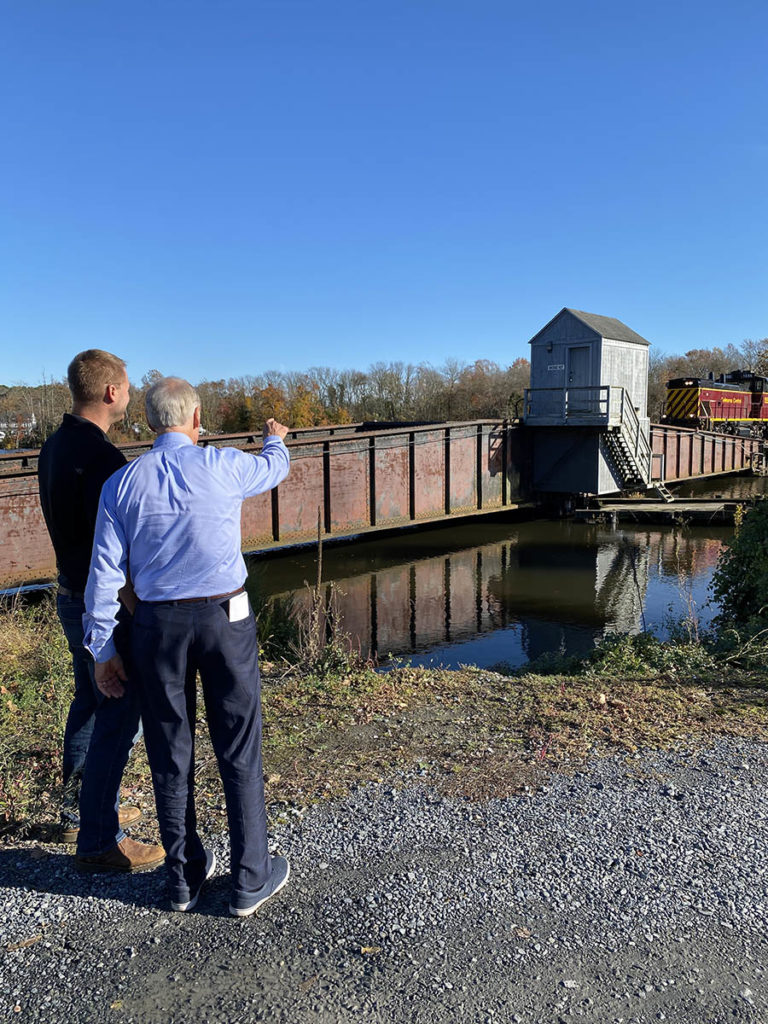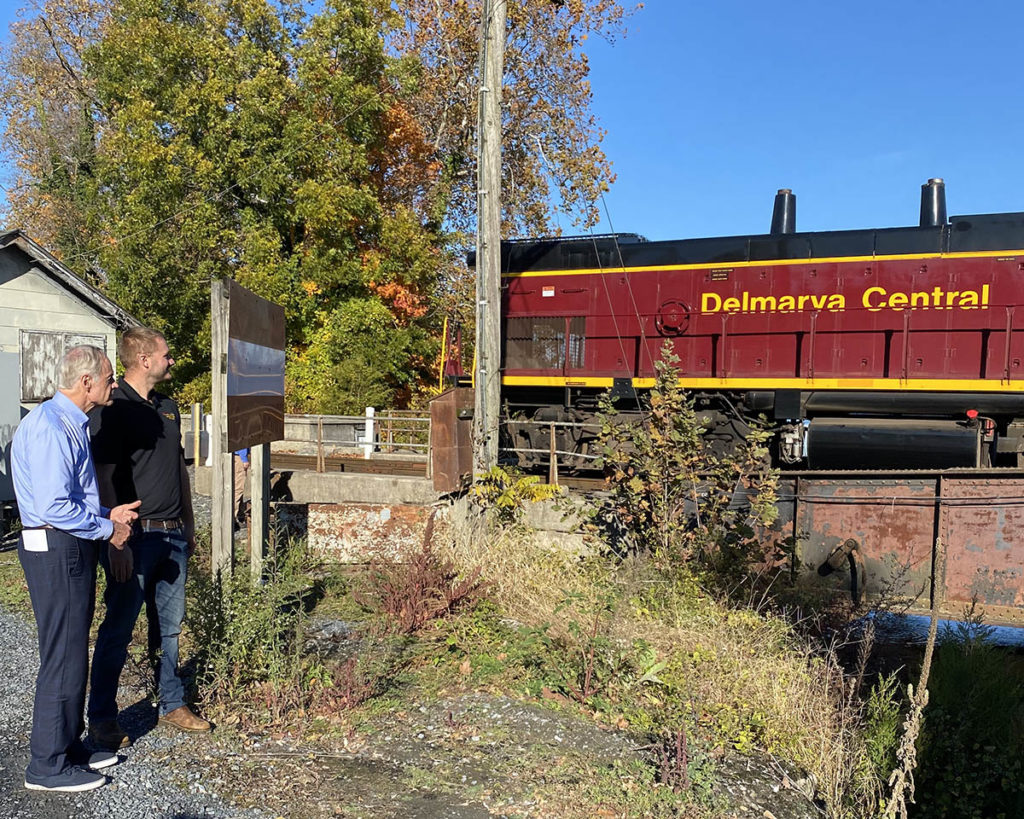Environment and Public Works Committee Chair visits Delmarva Central Railroad’s Seaford transload facility and swing bridge in Sussex County.
Seaford, Delaware — U.S. Senator Tom Carper joined officials from the Delmarva Central Railroad (DCR) on Friday for a firsthand look at the operations of the Delaware-based short line railroad, which operates 188 miles of track across Delaware, Maryland and Virginia.

Led by DCR, and joined by local officials including Seaford Mayor David Genshaw and Sussex County Councilman Michael Vincent, as well as representatives from Perdue Agribusiness, GoRail and the American Short Line and Regional Railroad Association, the Senator visited the railroad’s Seaford Transload Facility, opened in 2019, as well as a swing bridge modernization project in development where they reviewed a rail/barge terminal concept that could take thousands of truck moves off Delaware roads each year, meaningfully reducing road congestion and transportation-related emissions.
“Delmarva Central Railroad is a vital part of moving goods through the region and keeping our economy moving forward,” said Senator Carper. “Just last week, Congress passed the bipartisan Infrastructure Investment and Jobs Act, which makes extraordinary investments into our nation’s infrastructure, and helps short lines like DCR with more funding opportunities through grant programs. It’s important to recognize how railroads large and small are driving growth across the country and doing so in a way that cuts emissions.”
Connected to the nationwide rail network through an interchange with Class I railroad Norfolk Southern, DCR is a powerful artery for the Delmarva Peninsula’s broiler chicken industry. Its transload facility enables direct railcar-to-truck transloading of liquid feed ingredients, serving customers that had previously utilized long-haul trucks. Projects like the swing bridge and rail/barge terminal would help preserve Sussex County as a vital hub for grain farmers and the poultry industry for years to come.
“Railroads are a vital part of our economy—and they’re a much greener way to transport bulk materials great distances,” said Cliff Grunstra, vice president and CMO for DCR. “We’re grateful for the support of policymakers like Sen. Carper through the passage of infrastructure legislation that supports our work. DCR’s swing bridge, which we’re showing the Senator today, is an example of a project supporting local economic development that was enabled by a CRISI grant.”
Rail connections help customers reduce costs while decreasing local congestion. Freight railroads take about 1.2 million trucks off Delaware roads annually, cutting the state’s GHG emissions by over 700,000 tons.
“The DCR, which received a business development award from our association last year, is an excellent example of the economic powerhouse that short lines can be for small towns and rural communities throughout Delaware and the entire nation. The competitive, environmentally friendly transportation options that a short line railroad can offer to shippers, and the resulting positive impacts to the regional economy, will be enhanced by the infrastructure bill that was just passed,” said Chuck Baker, president of the American Short Line and Regional Railroad Association.

“Short line railroads are excited about the significant increases in funding that will be made available through the CRISI, INFRA, RAISE, and grade crossing and grade separation programs – funding that will help us invest in game-changing infrastructure projects that drive economic growth, improve safety, enhance efficiencies for our customers, and continue advancing the many environmental benefits of rail. We thank Senator Carper for both his leadership in developing and passing the bill and also for his visit to the DCR today.”
The group discussed how federal policies decided in Washington can impact railroads at the local level, and why the IIJA, for railroads, is an example of legislation that balances regulatory oversight without including unnecessary mandates that would undermine network efficiency and the ability of railroads to innovate and compete with other modes.
“Working together, North America’s seven Class I railroads and 603 short line and regional railroads move the economy, including about a third of both U.S. exports and intercity freight,” said Emily Traiforos, Delaware state director for GoRail. “It’s vital that these railroads can continue to invest in and improve their operations to meet increased demand and changing customer needs in the future.”
In Delaware, seven freight railroads maintain 236 track miles and employ 168.


